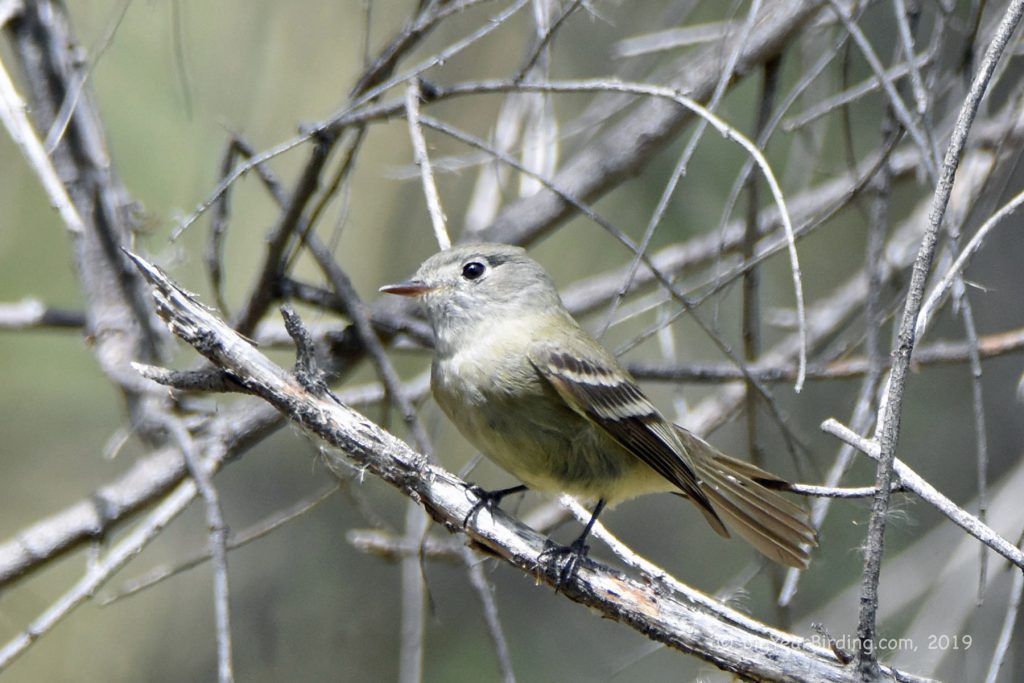The Hammond’s Flycatcher (Empidonax hammondii) is a small passerine bird found in western North America. Adults are approximately 5 inches in length and weigh around 0.3 ounces. This species is identified by its grayish-green back, pale gray underparts, and a noticeable white eye ring. The beak is small and dark, while the wings are relatively short and pointed.
The Hammond’s Flycatcher is known for its distinctive “chip” call that is often heard in the forests of its range. This bird species is a migratory bird, spending summers in the western United States and Canada and winters in Mexico and Central America. During migration, they can be found in the southwestern United States and parts of the Caribbean.
One distinguishing feature of the Hammond’s Flycatcher is its habitat preference. This bird species prefers to inhabit coniferous forests, and it can be found at a range of elevations, from lowland forests to subalpine areas. This bird is also known to inhabit mixed forests and open woodlands, particularly during migration.
The Hammond’s Flycatcher feeds on insects, which it catches while in flight or by picking them off vegetation. This bird species is known to perch on trees, often near the tops of coniferous trees, where it scans for insects. The Hammond’s Flycatcher is also known to catch insects mid-air and return to its perch to consume them.
Overall, the Hammond’s Flycatcher is a small, migratory bird that is found in the western part of North America. Its distinguishing field marks include a grayish-green back, pale gray underparts, a small dark beak, and a white eye ring. This bird species prefers to inhabit coniferous forests and feeds on insects caught in flight or by picking them off vegetation.

